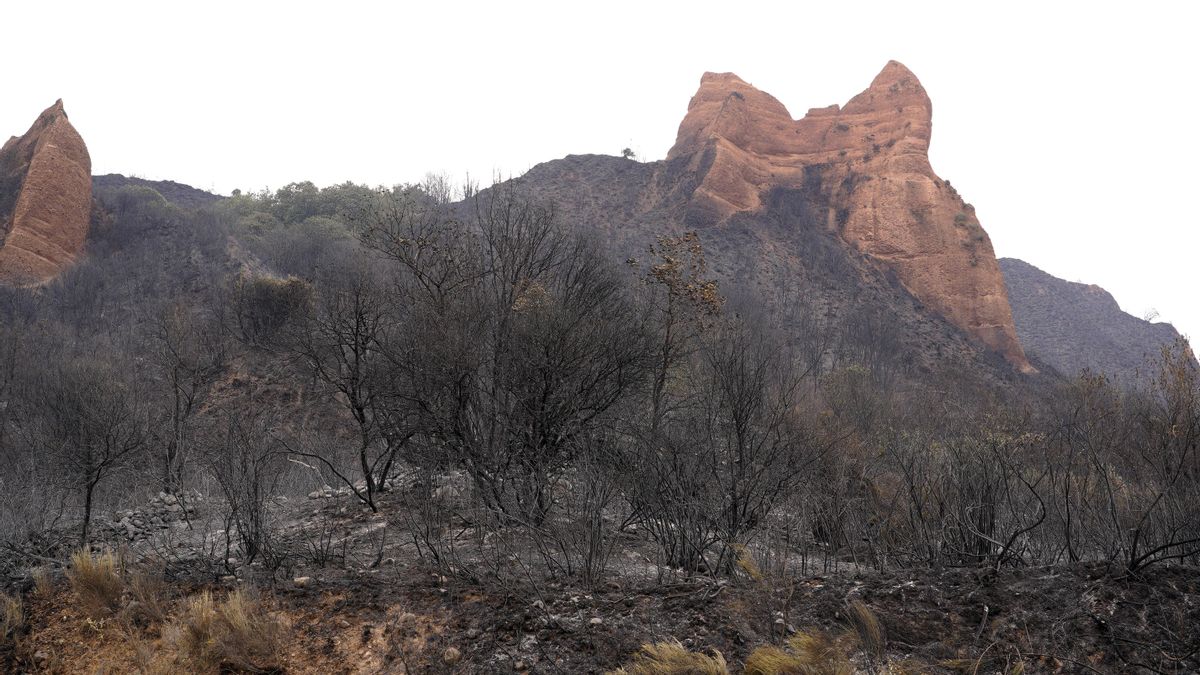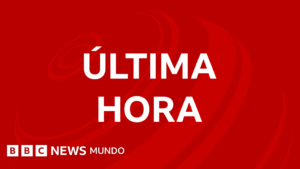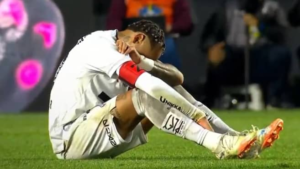There is a way of looking at the fires that goes beyond now, a perspective that looks at the past so as not to repeat errors and that is projected to the future to settle the regeneration. The parts of the public administration remain in states of the flames, in deployed media and in affected hectares, but there are especially sensitive burns, disappearance of pastures that conditions the farmers or alarm signs for fauna in danger of extinction. Under priorities such as the safeguarding of human lives and homes underlies the concern for a scenario increasingly on combustion due to climate change, as well as the future of sectors called to contribute to the recovery of the areas razed by the flames, such as León, one of the most beaten by a wave of unprecedented fires in recent history.
The president of the ADR (Rural Development Association) Bierzo-Cabrera, Nancy Prada, cannot demarcate the present of the past. With his family evicted from Yeres (Bridge of Domingo Flórez), the spark of the Fire that ended up ravling to the World Médulas Heritage Siteremembers the fire that was charged almost 10,000 hectares in La Cabrera in 2017. “And now we are at the same point. It looks like a nightmare,” he says. With that experience as a background, it urges not to repeat errors in the field of reforestation: “Repopulation was then made mostly with pine. Just a third was carried out with native species. And it was through initiatives of their own groups, which were the ones that put oaks or cork oaks.”
Prada echoes the “serious concern” in the area for the disappearance of oaks, holm oaks, willows, boldness, and singularly by that of centenary chestnut trees in areas especially of the low cabrera already attached to the Bierzo Chestnut Guarantee Brand. “And they will have to spend at least fifty years so that they can be in production,” he emphasizes to emphasize the “brutal damage” caused by fire to territories that entrust their economic future to the primary sector, as well as the potential of patrimonial resources such as the Network of Roman channels or astronomical tourism initiatives. “And this is a varapalo and a very important delay,” he admits.
The look of SEO (Spanish Society of Ornithology) Birdlife also goes beyond the hectares razed to look at the impact on fauna. “For birds it would have been more problematic than this situation would have occurred in spring, when they are reproducing, for the loss of nests,” says the delegate of the collective in Cantabria, Felipe González, while still alerting about the possible “catastrophic effects” for species with less mobility such as urogallo. The consequences will also be noted by small mammals and invertebrates. And González alerts another possible impact in deferred: autumn rains that end up eroding land without vegetation cover until they drag them to rivers where they can harm species such as trout or the Iberian demon.
Even if we are a few kilometers away, the medullary is not the same as Laciana. We are in two different planes. And the plans have to be agreed with the territory
Mario Rivas
— Mayor of Villablino
“The medulla and flames of Cabrera are areas with a lot of slope. If they are not regenerated, the rains will drag the ground,” abounds the Ecology Professor of the University of León (ULE) Leonor Calvo to trust part of this regeneration of the soils to which there are no very high temperatures after influencing factors that have meant a cultivation broth for fires such as the “tremendous” accumulation of forest mass Converted into fuel, the meteorological process substantiated in “heat waves so strong and so often” and the “abandonment of traditional uses” of the mountain.
With the forecast that similar scenarios are repeated, Calvo urges to guide the future through fire risk plans and self -protection, as well as “severity maps” to try to “focus recovery efforts”. “It will be impossible to manage everything. So we will have to prioritize. And establish security systems in sites that are more vulnerable,” he says.

Climate change “triggers the risk of fires. And the future is not very flattering in this regard,” says Seo Birdlife delegate in Cantabria to indicate that the abandonment of traditional activities in the Leonesa mountain has generated “a homogeneous and very fuel landscape.” The answer, contras, should go in a triple direction: to turn more efforts in “prevention”, generate “mosaic landscapes” with the concatenation of different activities and resort to “technical fire” through controlled burns that allow reducing forest load. It is, in short, to put obstacles to the flames.
That we all think that guilt is not only from others; It is also ours. And we have to look what we can do
Leonor Calvo
— Ecology Professor at the University of León
“The damage to the natural heritage is incalculable. It will be difficult to recover it in decades,” determines the mayor of Villablino, Mario Rivas, around the Orallo fire, one of the most important these dramatic days in the province of León, with the added aggravating aggravation of focusing on a key environment for the future of species such as the Urogallo and the Bear. Beat as few regions by the end of coal mining, Laciana tries to privilege sectors such as livestock, also to the extent that her activity helps “molded that natural landscape.” “And the varapalo already shows from today for farmers,” emphasizes the councilor by referring to the loss of pastures.
Rivas, who already advances the intention of requesting the declaration as a “catastrophic zone”, also goes further thinking about reconstruction. And there, looking to the future, demands the establishment of concrete plans for territories. “Although we are a few kilometers away, the marrows are not the same as Laciana. We are in two different planes. And the plans have to be agreed with the territory,” he claims to influence the need to “make traditional uses and customs compatible with new regulations” when determining the execution of debrodes and firewall Montes
“You have to talk to the people of the territory. Each orography is particular. And you have to reflect on how to act,” coincides with the manager of the Omaña y Luna Biosphere Reserve, Natalia Castro, still waiting to dimension the final impact of the Fasgar fire (Murias de Paredes), which has fully affected areas of high ecological value such as the abdular of Mentrondo or “emblematic” points as the slope of the peak of the peak. “We are going to have to live with fires and we must see how to prevent situations such as the evictions of the populations,” says Castro to show that fires also compromise “personal and family economic projects”, while “affecting the quality of the waters” and generate a series of chain effects that cross the borders of the rural environment until they reach the urban. “And this will also be noticed in León Capital, where in these days I was already raining ash,” he concludes.
Public administrations themselves establish differences and nuances. The Territorial Delegate of the Board in León, Eduardo Diego, did this Thursday, referring to the impact of fires on points such as Anllares del Sil (Páramo del Sil), Fasgar, the Vecilla or Barniedo de la Reina (Boca de Haragano). “Although they are less hectares, from the natural point of view they have more damage,” Diego said when comparing them with larger fires such as the one that affects the south of the province, which already aims to be the largest in Spain on the surface at least since there are counts, and in which it puts on the balance its effects on “properties, affected peoples, displacements, fear, impatience, discomfort and impotence of families.”
And the Ecology Professor of the ULE Leonor Calvo, which highlights the work of the operators who fight the flames and affects as a recipe for the future to deepen in agrosilvopastoral uses, launches a last reflection to address the day after this fire cataract, in addition to realizing that many have their origin linked to “human activities”: “that we all think that it is not only of others. We have to look at what we can do. ”





